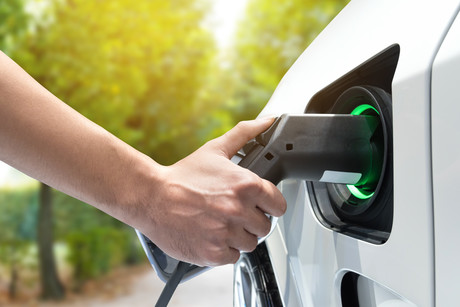Electric vehicles: everything is changing

Electric vehicles used to have a set of different challenges for broad adoption. One of them was electric vehicle range, which was translated on what is known as range anxiety — the fear of getting stranded with no battery juice in the middle of your trip. The second challenge is price and resale value, and the third is the availability and convenience of charging stations.
Electric vehicle range is improving every year and the future promises even further improvement. Today non-premium electric cars can achieve 400 km in standard test conditions and at least 300 km in normal use conditions, like the Renault Zoe ZE40. This car was the bestselling pure electric vehicle in 2017 in Europe, with approximately 31,000 vehicles sold.
In relation to the first generation of battery packs, this new model has doubled the battery capacity to 41 kWh of usable energy keeping the same battery module size. Other models with similar ranges are the Chevy Bolt with 383 km and the Tesla Model 3 with 354 km. The old barrier of 160 km range is a thing of the past as there are at least seven more models with ranges over this mark. On top of that, in the next 10 years we will see batteries’ energy density double with next-generation battery technologies.
The second barrier — price — is moving forward in the right direction as batteries, the most expensive component, will experience dramatic reductions in the following years, reaching US$100/kWh in the next five years. This will promote further price reduction in electric vehicles, reaching cost parity with petrol cars very soon. With the emergence of business models to make re-use of batteries after they finish their useful life in vehicles, known as battery second life, the business case for electric cars will only increase.
The missing link in the ecosystem is now charging infrastructure. This is now the next barrier for electric vehicles to confront. Approximately 16,000 public chargers are available in the US, 8000 in Germany and 4000 in the UK. If electric vehicles are adopted by more people who do not necessarily have a garage where they can charge their cars, more public charging infrastructure will be required.
IDTechEx research has followed the alternative paradigm of energy independence in vehicles. This is accomplished by installing energy-harvesting technologies in cars, such as photovoltaic energy. Indeed, electric vehicles can increase their range from 5 to 20 km with the installation of PV panels on the roof. Toyota, IFEVS and Hanergy are among the key players adopting this technology.
If we push further this paradigm with increasing PV energy efficiency, electric cars will be less dependent on charging infrastructure. On the other hand, public transport like electric buses has followed a different paradigm in charging infrastructure; given the defined operational routes in these vehicles they can charge either in depots (slow charging) or at stops while en route (fast charge).
IDTechEx’s Electric Vehicles: Everything is Changing conference will focus on this debate, as managing charging will be key for the future of energy systems. Featuring some of the leading players of the emerging electric vehicle industry for land, sea and air, the event will be held from 11–12 April in Berlin. For more information, visit https://www.idtechex.com/electric-vehicles-europe/show/en/.
Avoiding EMC issues: simple tests you can do yourself
This is a brief overview of EMC compliance with some practical tips on not getting caught out.
Electric dump valves help oil and gas company reduce emissions
Oil and gas company Laramie Energy deployed ASCO zero-emissions electric dump valves to comply...
Australia's largest electronics expo returns to Sydney
Electronex, the annual electronics design and assembly expo, will return to Sydney on 19–20...





